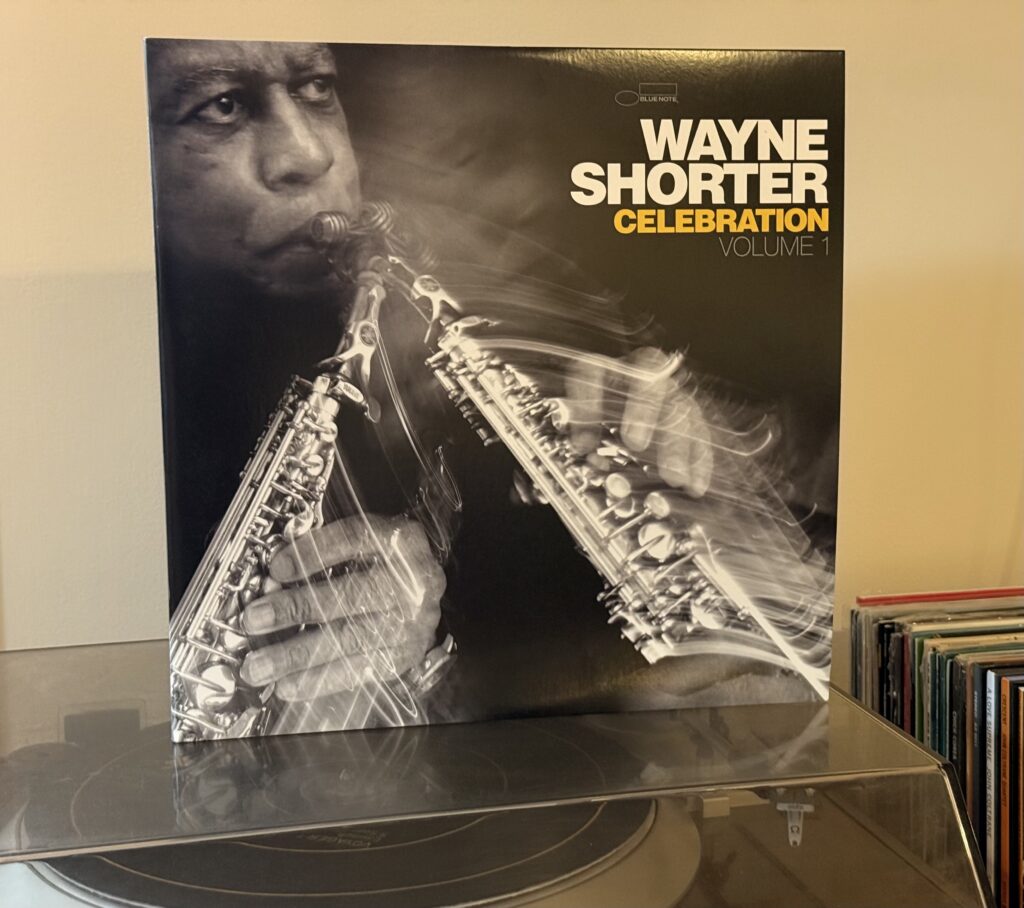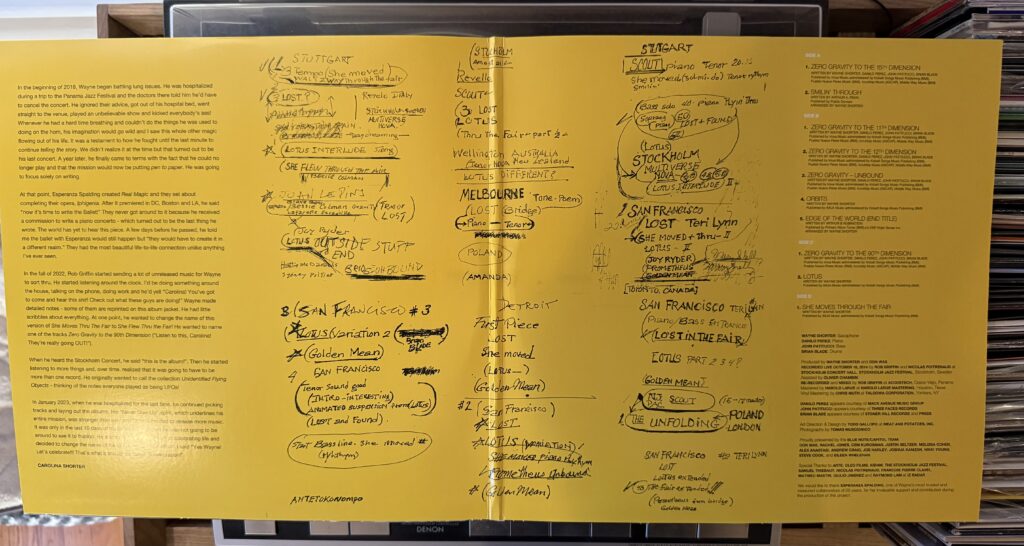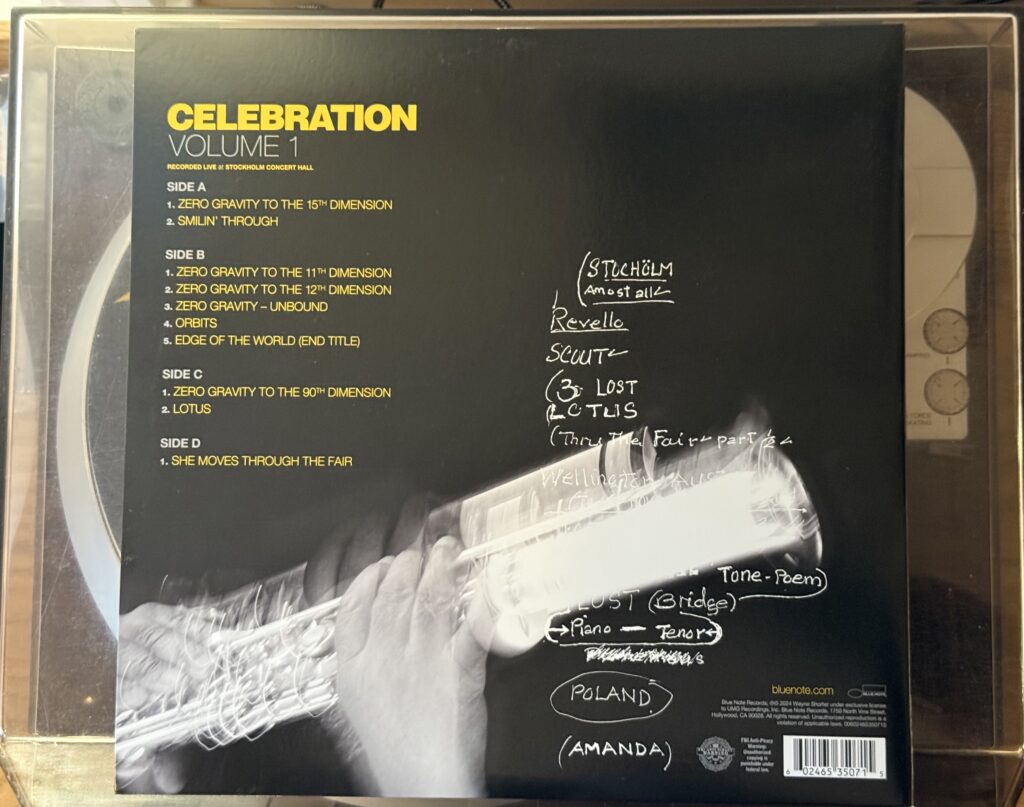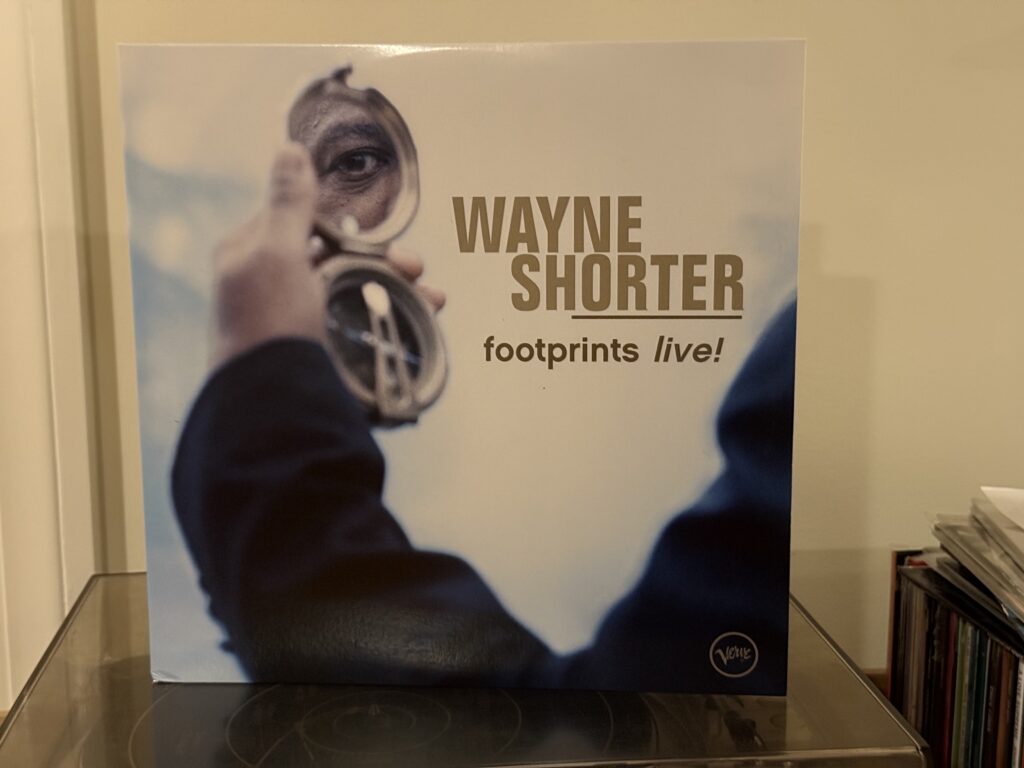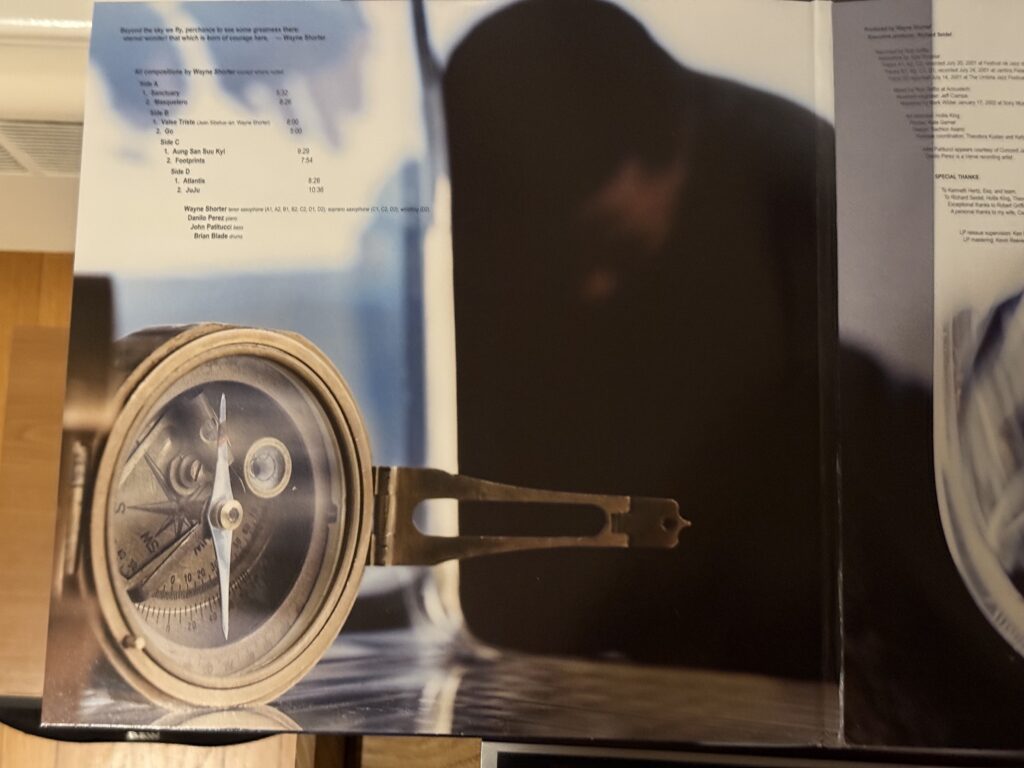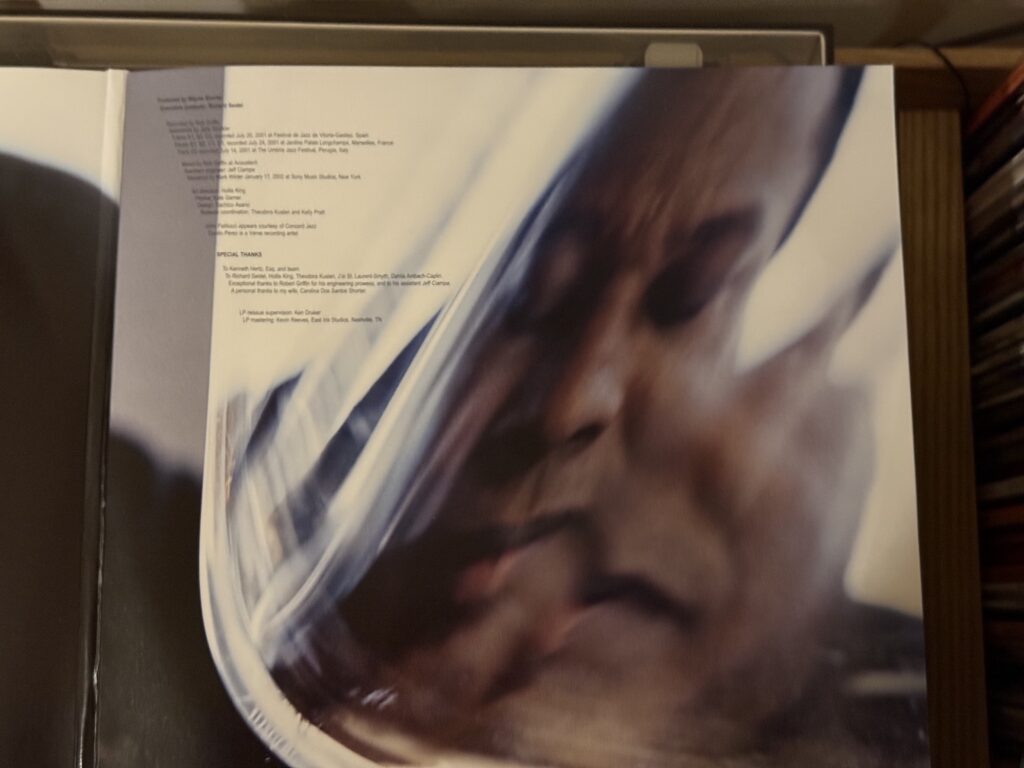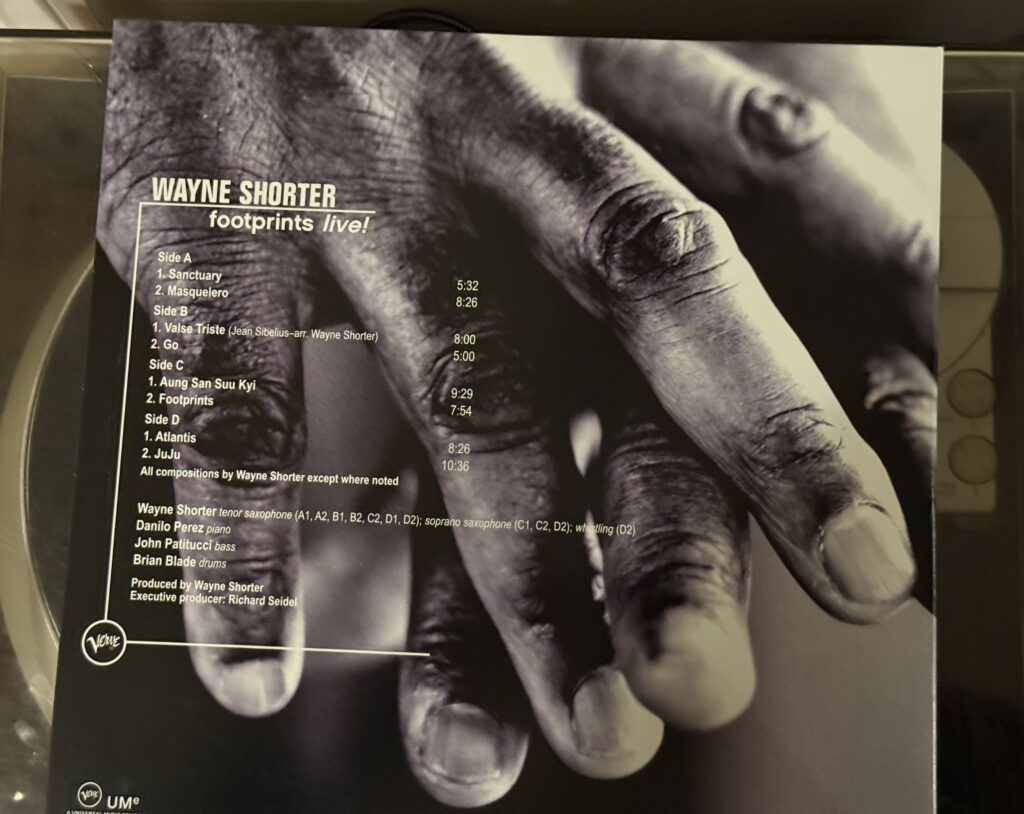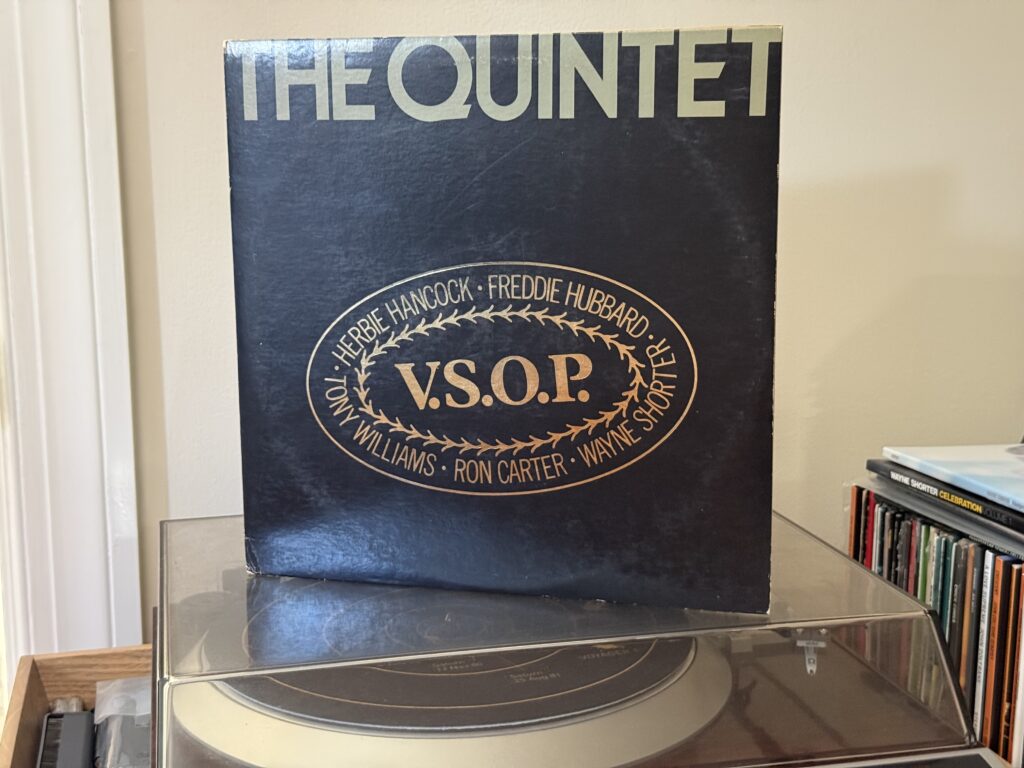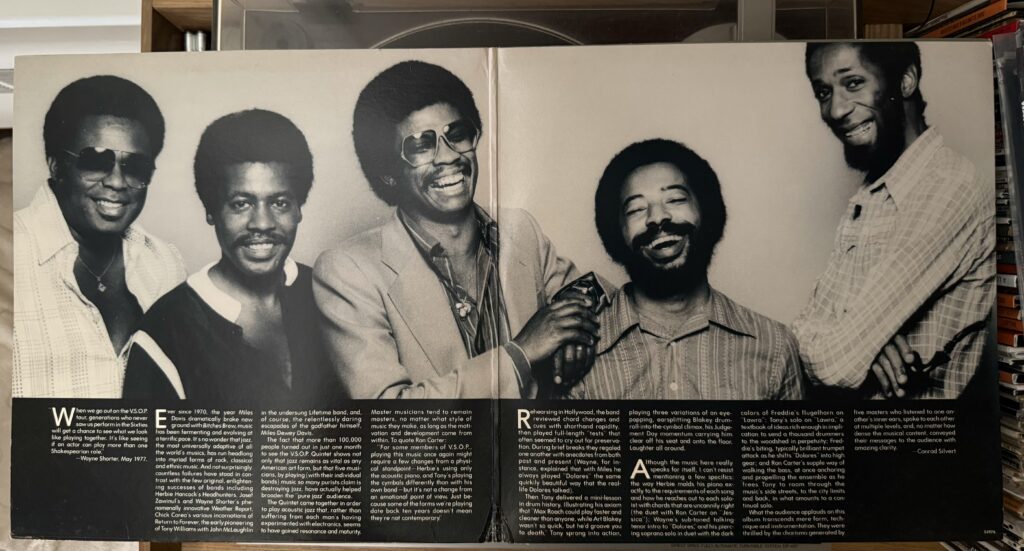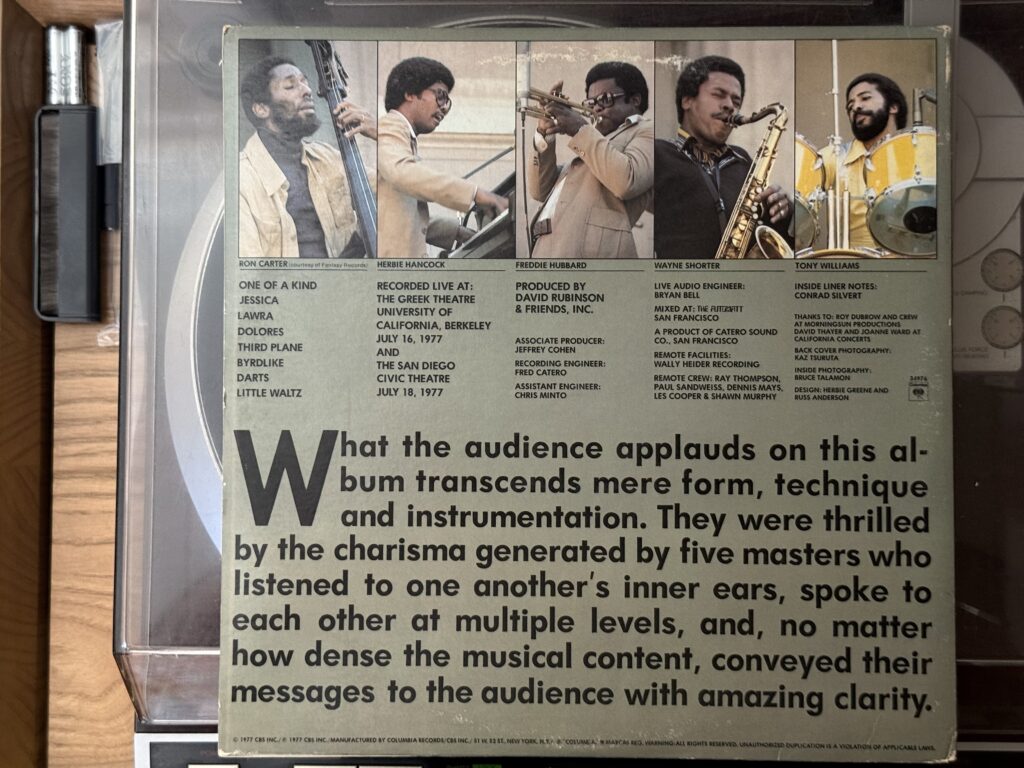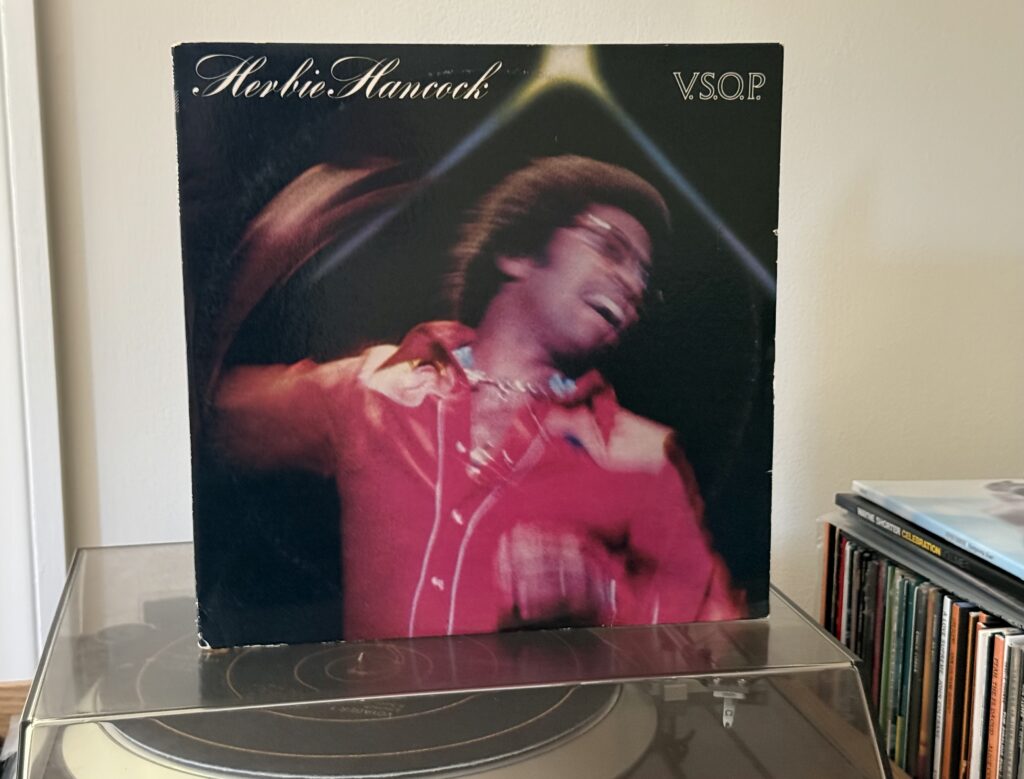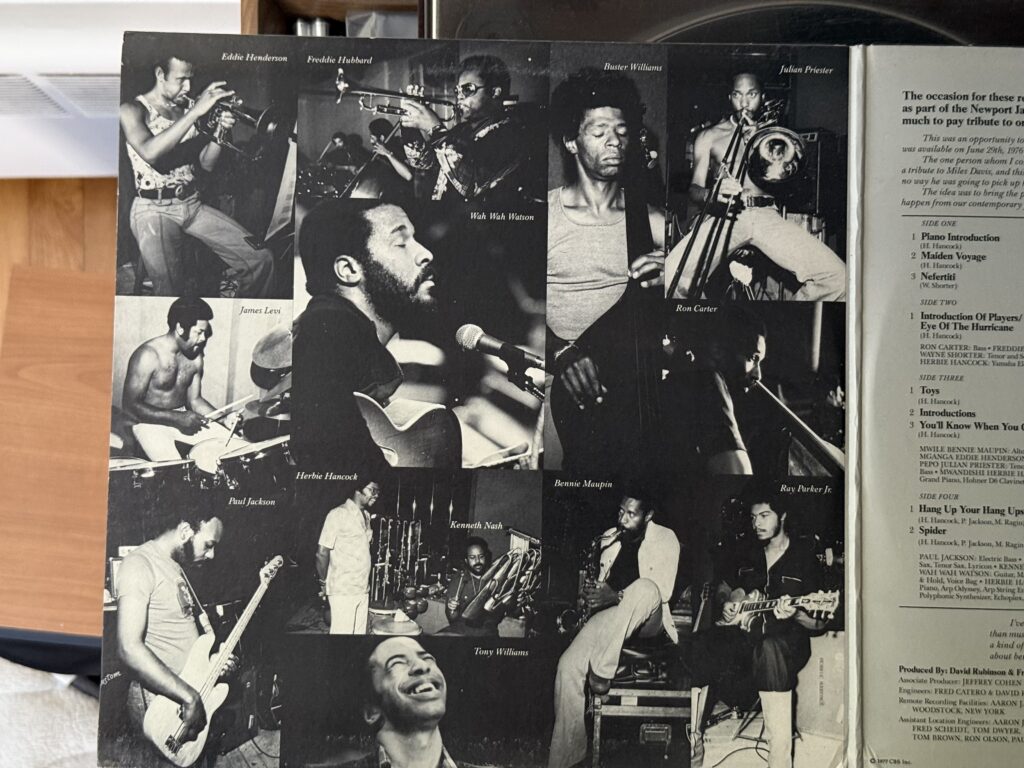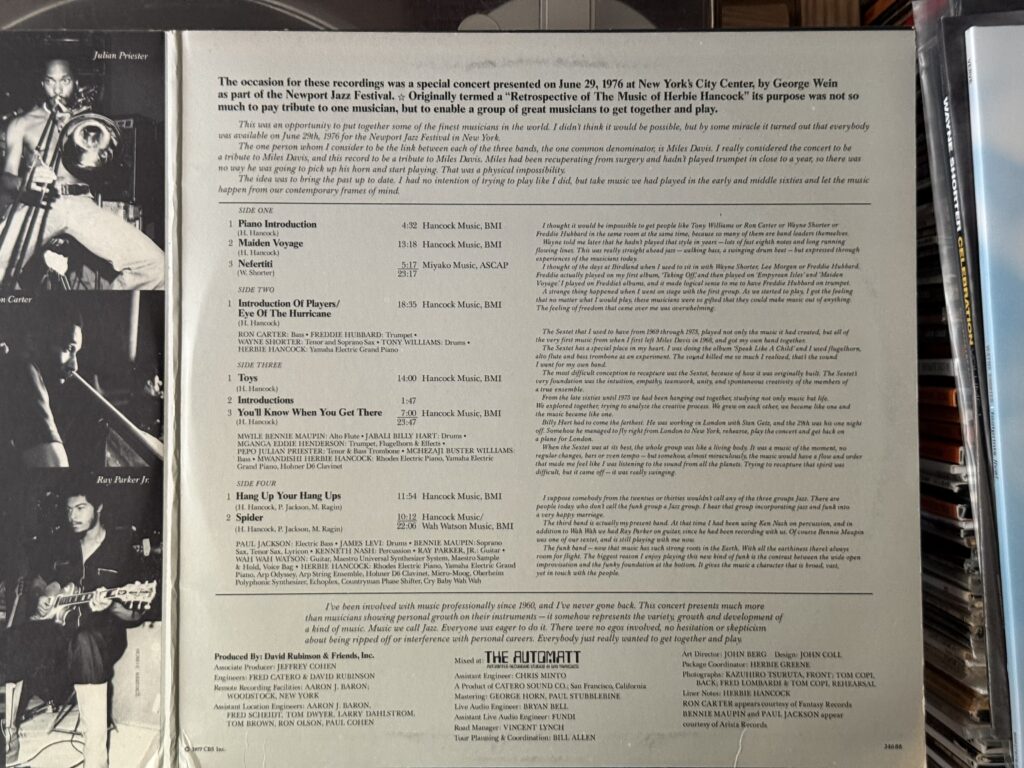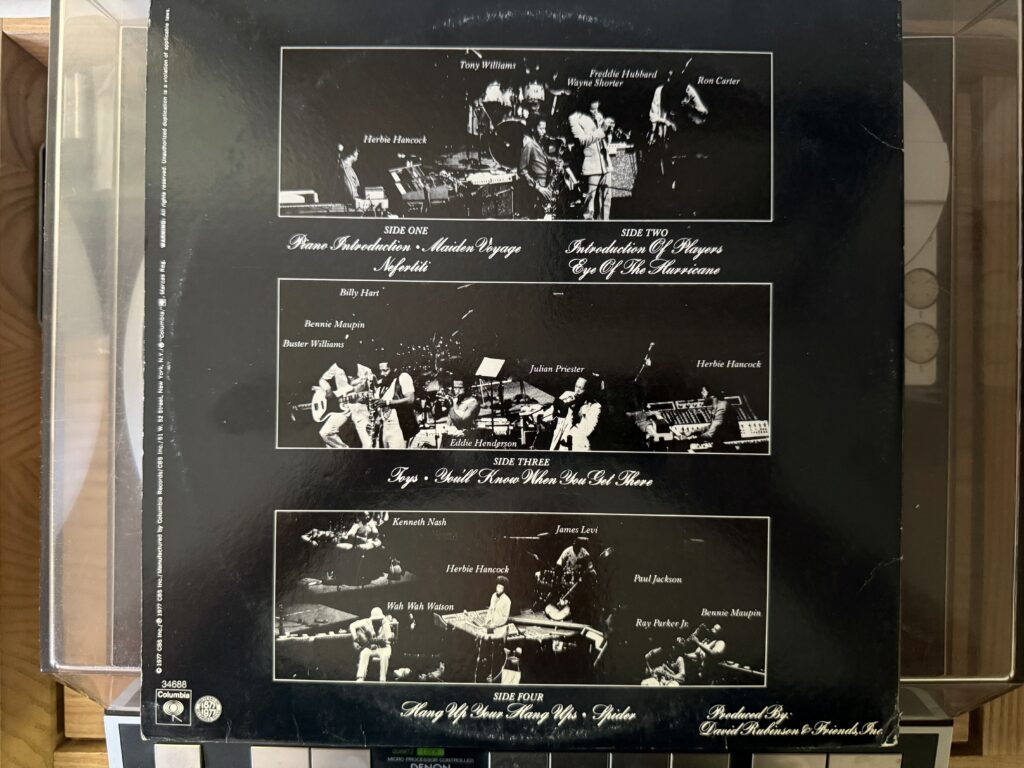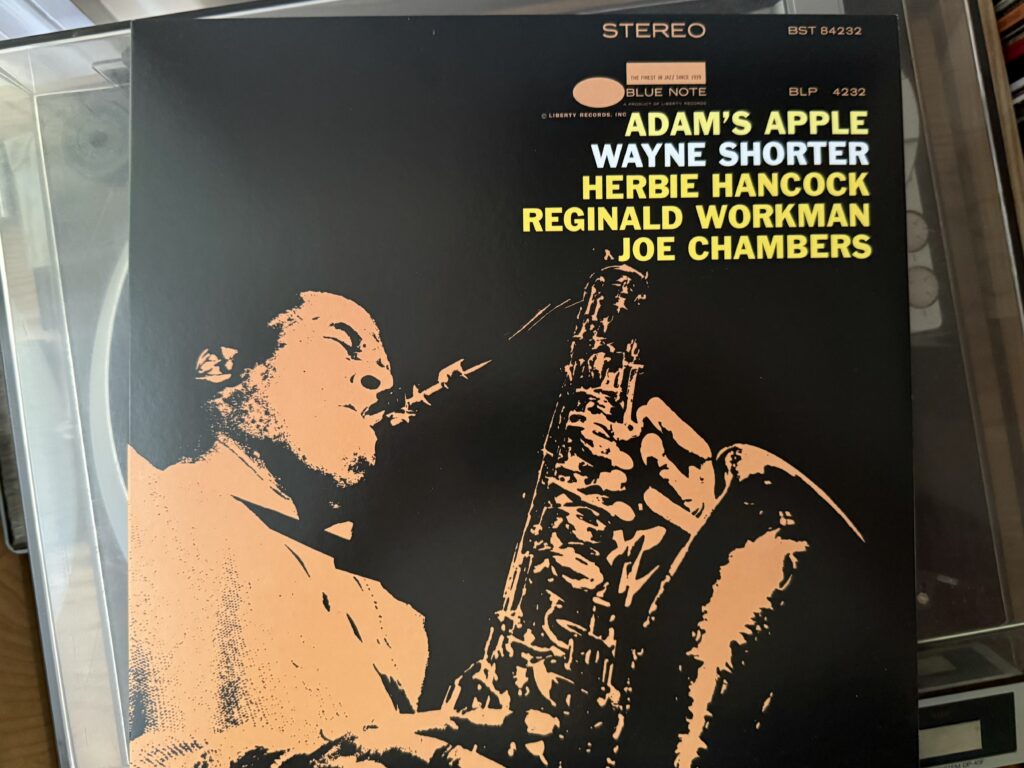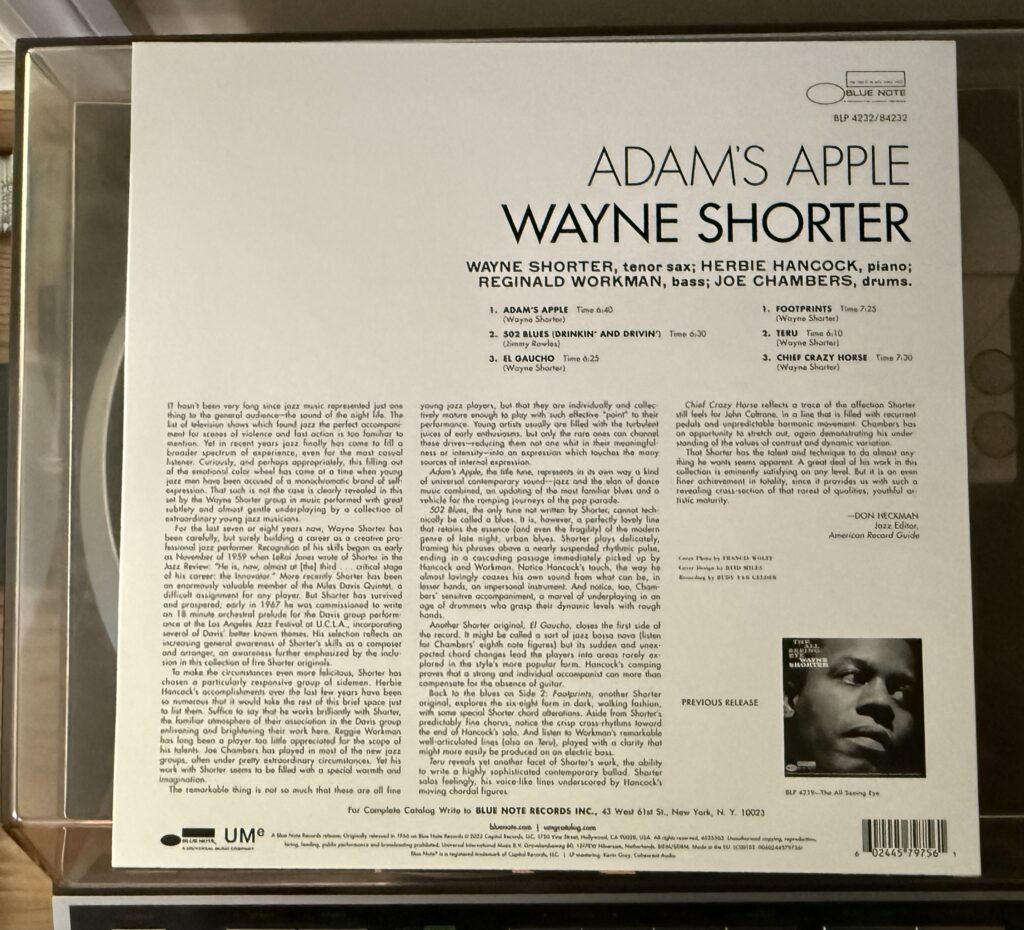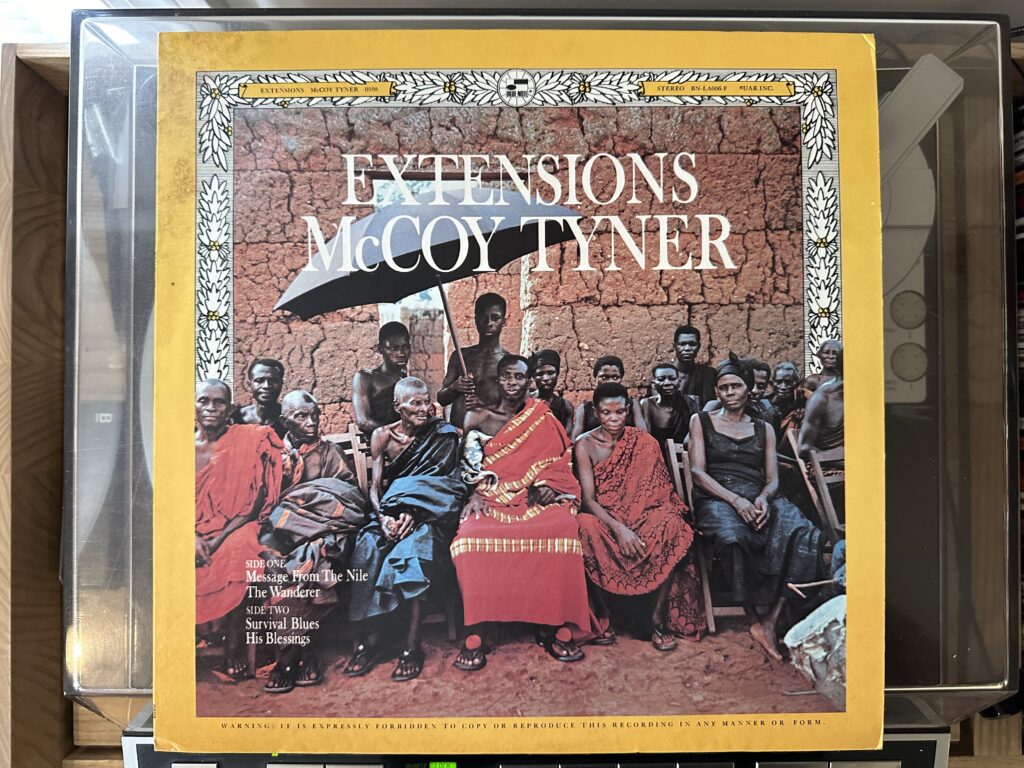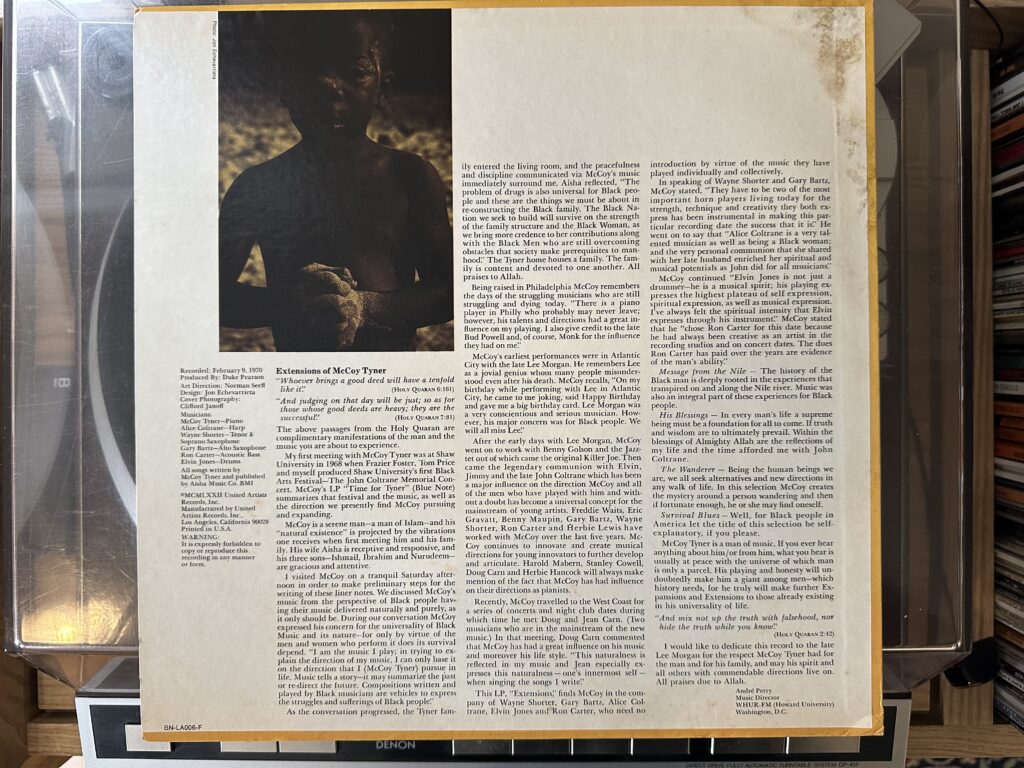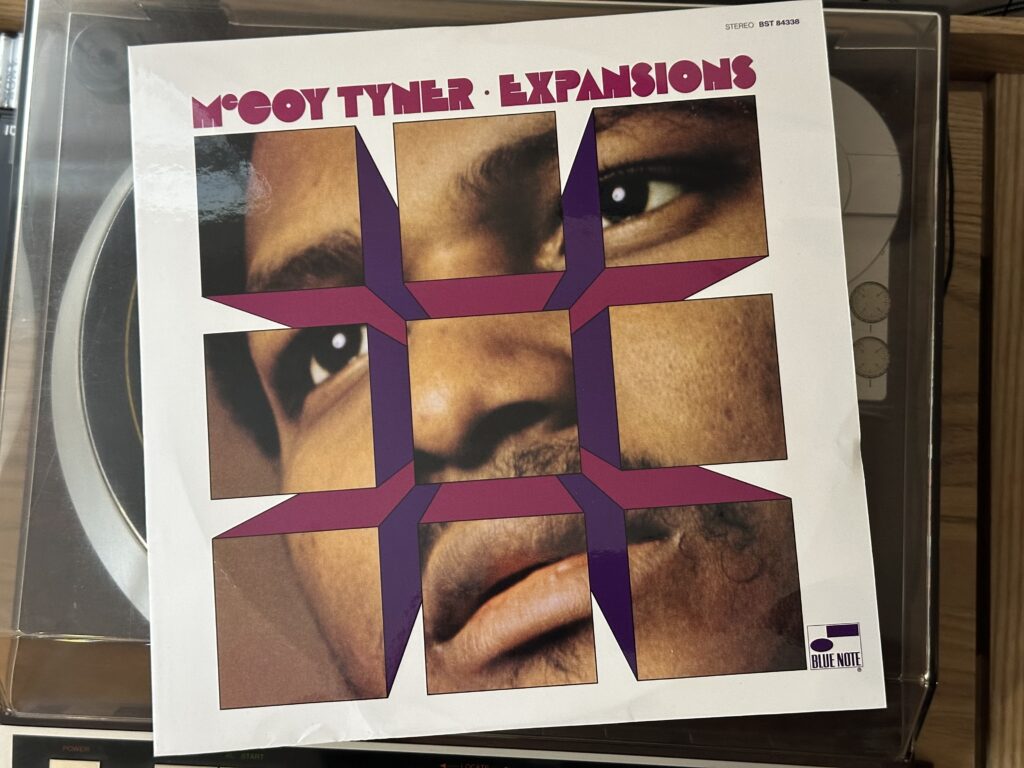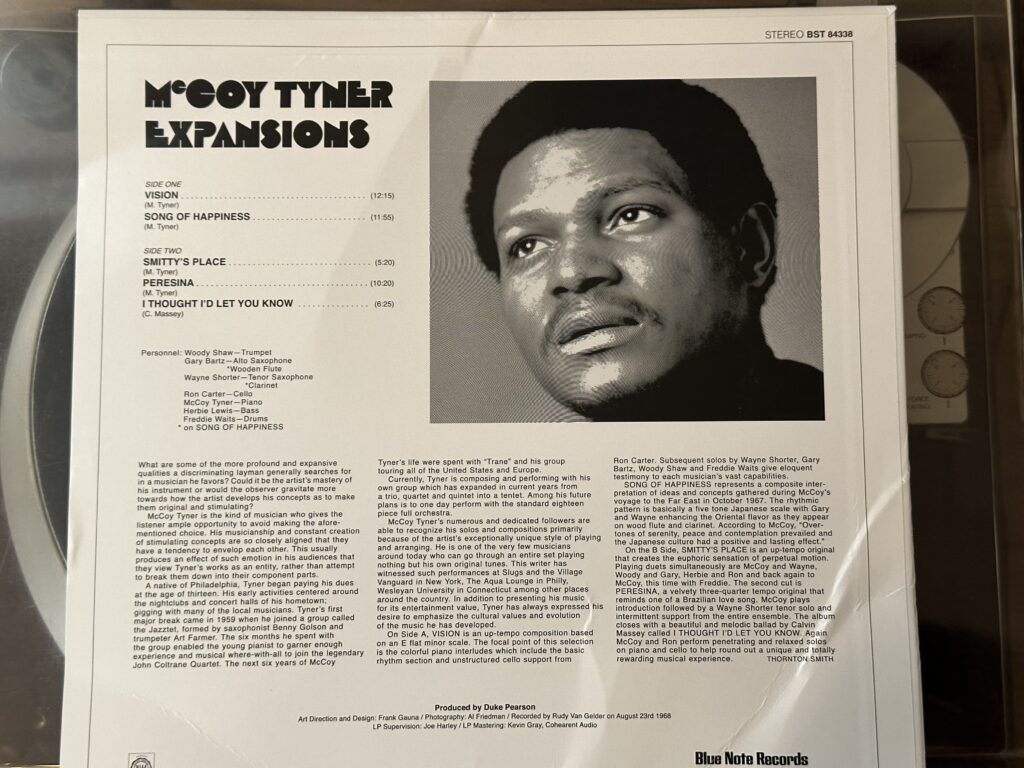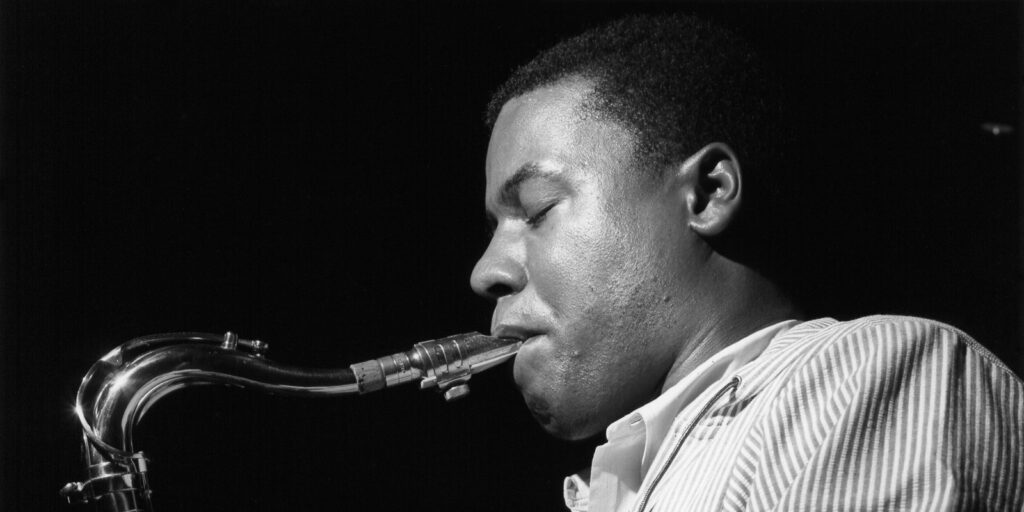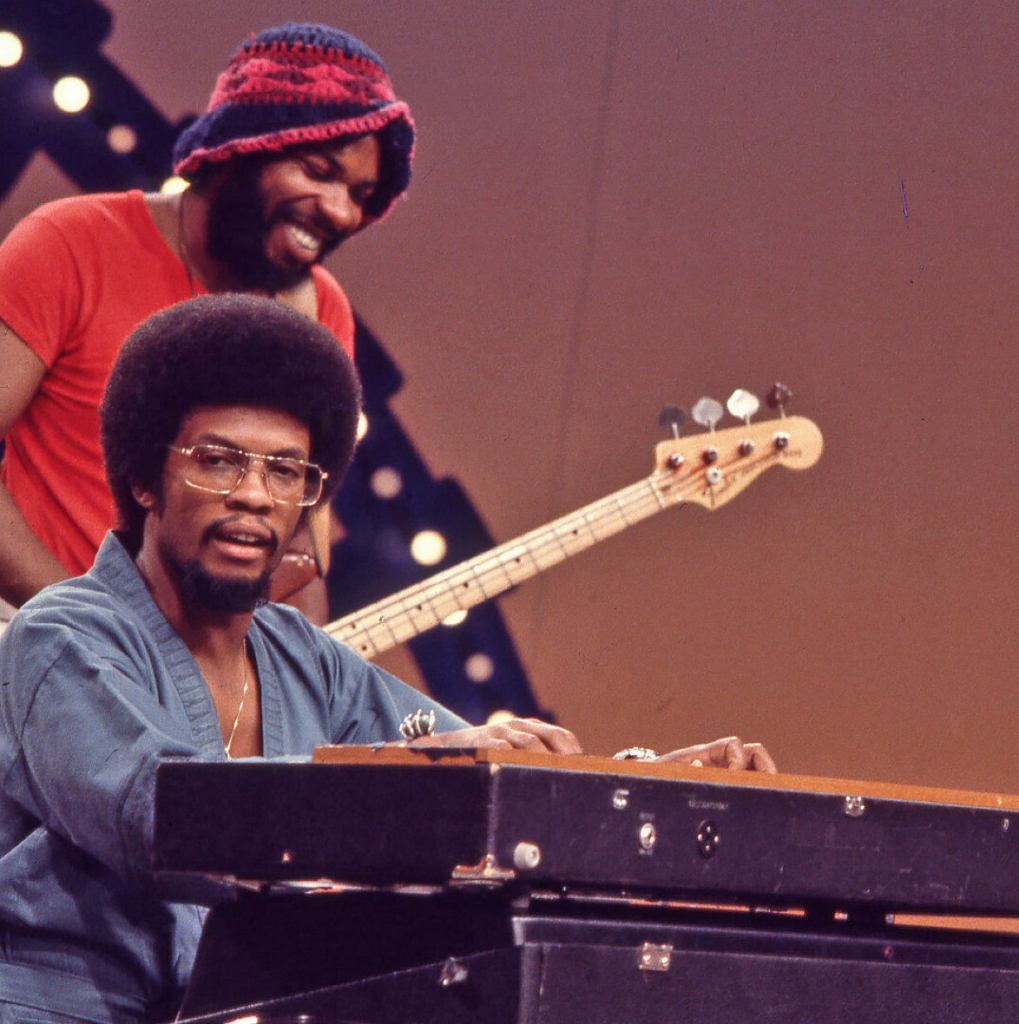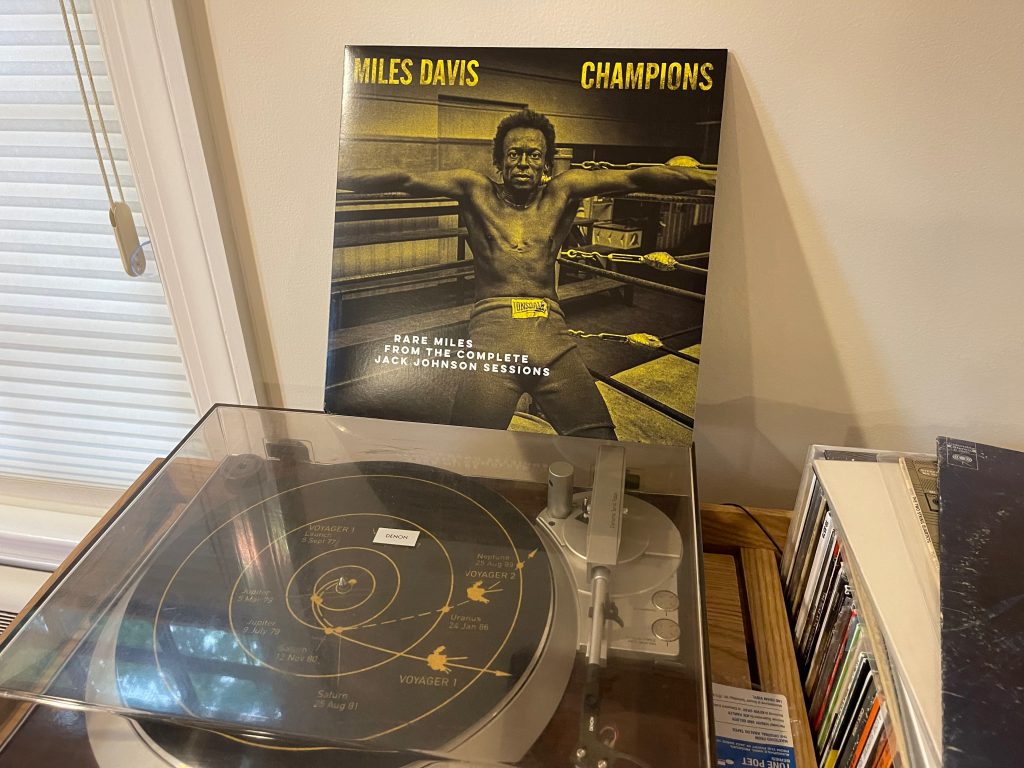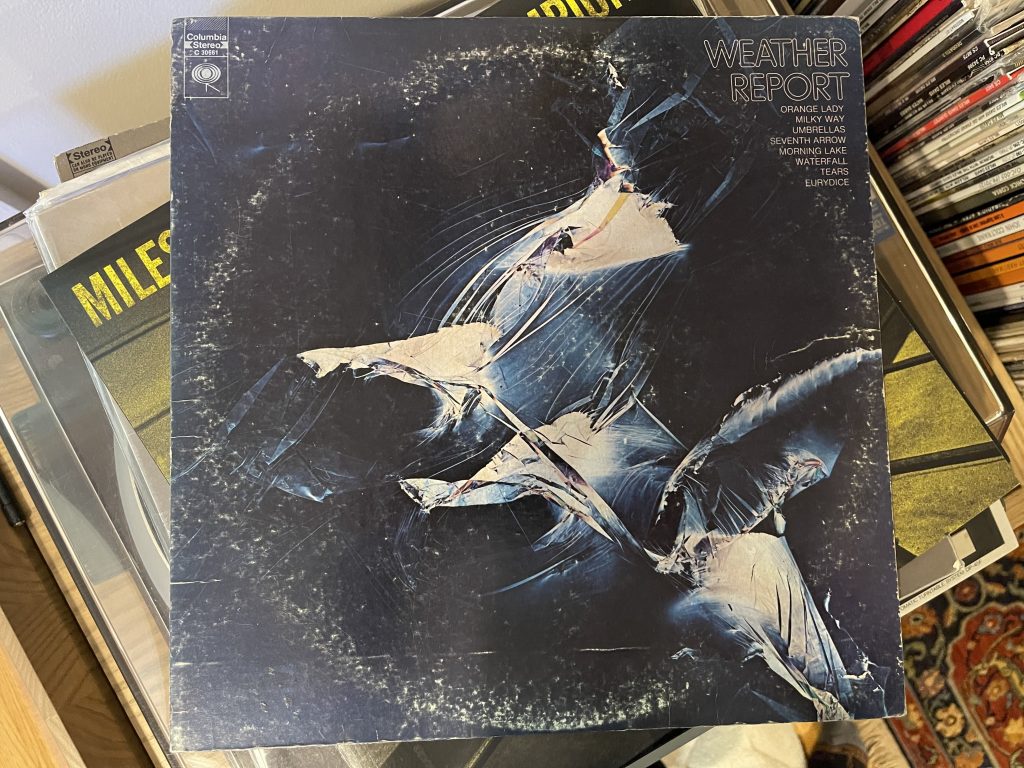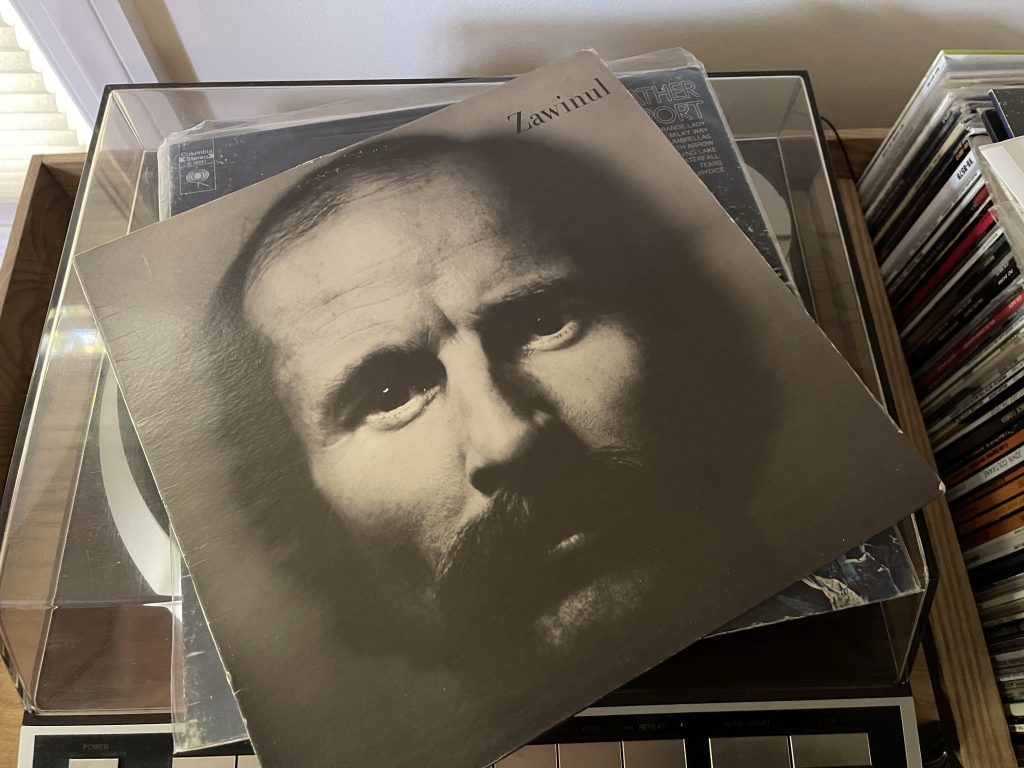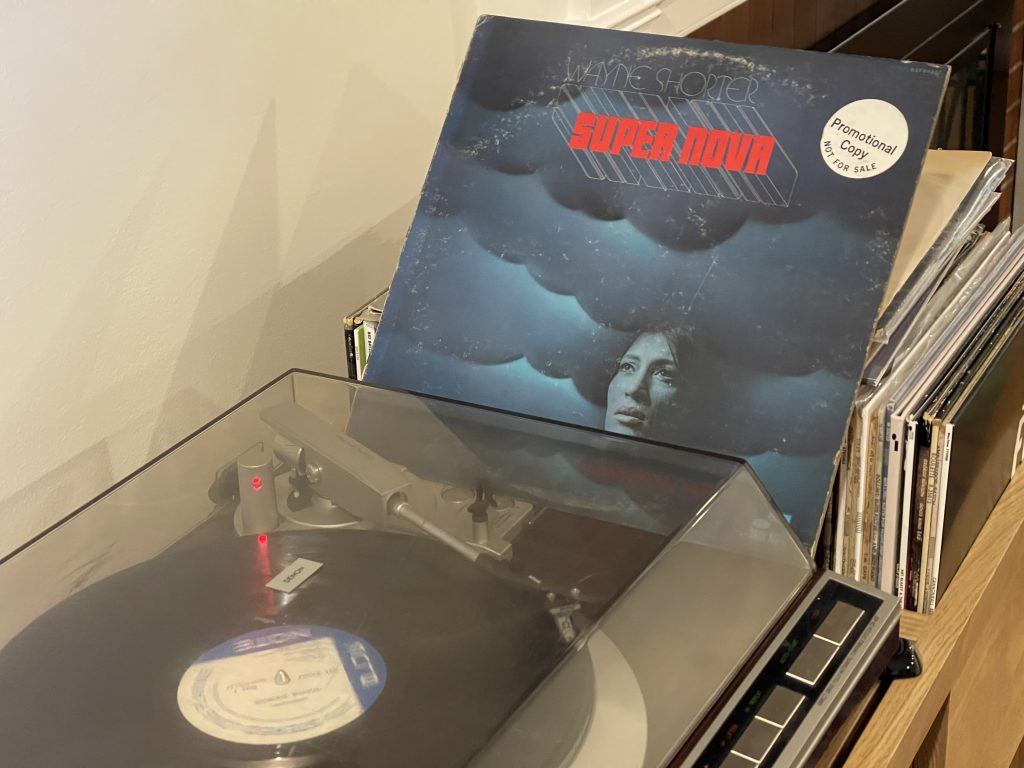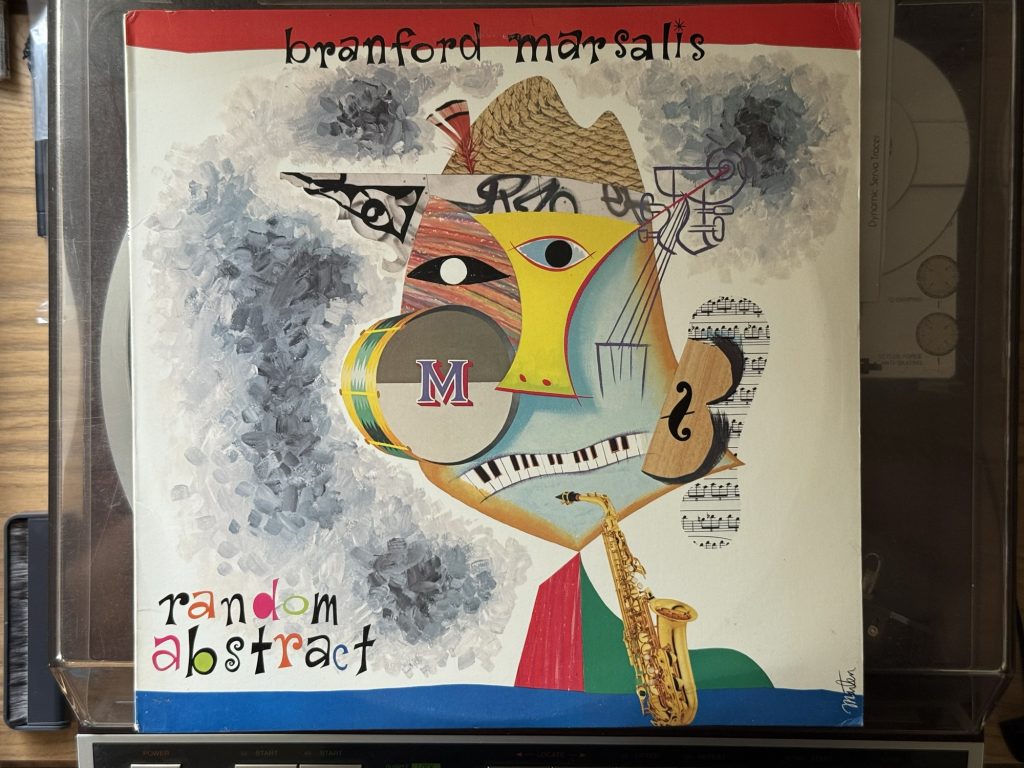
Album of the Week, May 3, 2025
To be a jazz fan in the 1980s felt like you were sorting yourself into a camp. You were either a fan of Miles Davis, Weather Report and the other jazz-rock fusion artists that were still big on the landscape, or you leaned hard into the traditionalist camp of acoustic jazz, spearheaded by Wynton Marsalis and his artistic collaborators. Like all artistic yes/no decisions, this one was really more a false choice imposed by marketing—ironically, much of which was led by Miles’ old label, Columbia Records. For me, Branford Marsalis represented a kind of third path—someone who honored the traditions but who looked beyond them, as comfortable leading a post-bop quartet as he was playing with Sting. Random Abstract, his fourth album as a leader for Columbia, falls into the former category, an album of straight ahead acoustic quartet jazz that, even as it explores the young saxophonist’s influences, nonetheless presents a distinctive voice that stands apart from what his brother was doing in his own small group.
The quartet that played with Branford this time around was a combination of familiar and new faces. Kenny Kirkland had been with Branford since his first album for Columbia, 1984’s Scenes in the City and also was a trusted collaborator in Sting’s band. Drummer Lewis Nash had worked with both Ron Carter and Betty Carter prior to joining Branford for this session, the only one he ever played with Branford. And this was bassist Delbert Felix’s first major label credit, though he had played with the band in some live gigs prior to the recording.
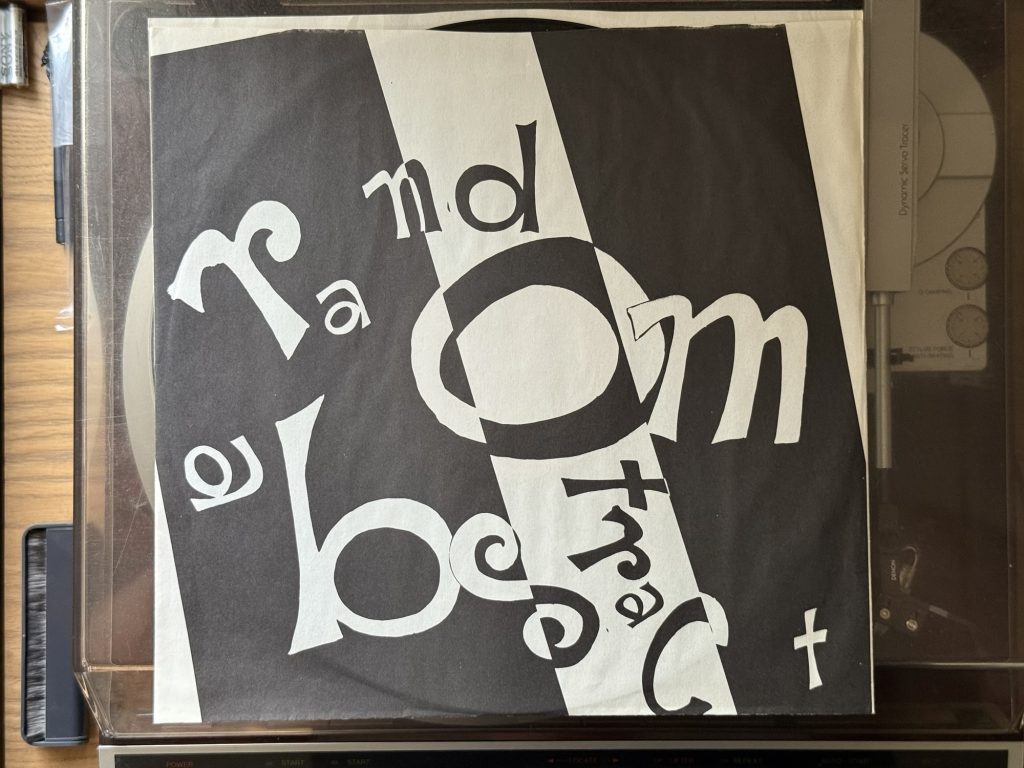
“Yes and No” starts us off, a lightly retitled version of Wayne Shorter’s “Yes or No” from JuJu. The liner notes, by Branford’s brother Delfeayo, talk a great deal about the influences on Branford’s stylistic development, but Shorter was the most significant and obvious influence at this time, as seen in his embrace of jazz fusion and the soprano sax as well as his tone. One misses the originality, not to mention occasional weirdness, of Wayne’s improvisations, but there’s no denying the depth of Branford’s affection for the Blue Note Wayne Shorter sound here. In this rendition you can really hear Shorter’s compositional structure, which reveals itself to be rooted in the twelve-bar blues: as Branford’s saxophone plays two long phrases and a third phrase that circles around the tonic, Kenny Kirkland exuberantly points up the chords beneath, creating an effect not unlike the proverbial duck (busy paddling beneath the surface of the water while all seems smooth above). Branford and Delfeayo made an aesthetic choice to record Delbert Felix’s upright bass through an external microphone, rather than the “dreaded bass direct” used by Ron Carter and others; it may indeed have “obtained more wood sound from the bass” but also means that the bass is mixed rather low in the final recording (this may have also been “due to miscommunication” as the liner notes indicate that the track was inadvertently recorded direct to 2-track digital), so that you have to strain a bit to hear Felix’s constantly moving bass line. Lewis Nash’s drums have no such challenge being heard, as he keeps thing moving along through phrases that keep time with running hits on the hi-hat and occasional snare explosions.
The band segues into “Crescent City,” a Branford original, which opens in a major key version of the famous opening track to John Coltrane’s Crescent but quickly shifts into the modal minor blues. Where Trane’s original swirls around freely for the opening before landing in a slow four, Branford’s iteration stays fairly metrical throughout the opening, including a lovely four-bar solo statement from Delbert Felix, and shifts into a slightly more deliberate meter as Kenny Kirkland takes the first solo over Felix’s walking bass. Kirkland’s solo plays with meter, shifting back and forth between swing, triple meter, and syncopated patterns throughout. Branford’s solo is similarly fluid in its approach; though it stays close to the chord changes throughout, the rhythmic pattern shifts from quarters to sixteenths freely. Early on in the solo we don’t hear “sheets of sound” in the Coltrane sense—even the most rapidly moving passages are swung, creating an effect of being just slightly behind the beat even though he’s right in the pocket throughout. It’s only as he takes his third verse through the changes that we hear that roiling Coltrane blister of sound, but it shifts back into another swinging pattern. If, as Delfeayo suggests in the liner notes, he is paying homage to Trane here, the elder’s influence feels completely internalized and absorbed into his own musical approach.
“Broadway Fools,” another Branford original, starts with a false start and a count-in announcing itself as “Take 1.” The tune consists of a suspended intro and a melody that lopes up the scale as though the unserious quartet were joking and swaggering their way down the street. When Branford takes the first solo on his soprano sax, Kenny drops out and the trio continues on, apparently without reference to chord changes or anything other than that swinging beat. As Delfeayo notes, the whole effect is very much like a swinging Ornette Coleman. He swings his way up the scale into a higher octave but comes back down again, modulating through the tune and finally quoting the opening intro, trailing off into a series of descending quarter notes. Kenny Kirkland picks up the pattern and lopes down the block, accompanied by Delbert Felix. Along the way he finds a few patterns that he repeats, sounding a bit like Thelonious Monk trailing off into a reverie. The loping melody returns at the end for two repetitions, hitting a false ending with a Lewis Nash explosion, and then repeating the suspended intro after a few seconds, with just enough smearing of the notes in the saxophone to make it sound as though the tape was restarted just to catch the last bit. The whole effect is to show a side of Branford completely unlike what we hear from Wynton’s albums—namely, that he’s funny.
Opening side two is “LonJellis,” Kenny Kirkland’s compositional contribution to the album. It pays tribute in name to Ellis Marsalis, but after Lewis Nash gives us the rhythmic opening over a rumble of low notes from Kirkland, Branford plays a melody that rolls through a rapid series of chords—according to an online transcription, those are F♯7 alt, Am7, G7, A♭Δ♯5, F/G, and Cm7 (!)—but still remains hummable. Branford picks up and improvises at something approaching breakneck speed over Felix’s walking bass and the roll and crash of Lewis Nash’s drums. The solo does not appear to be hindered by the opening chords; Branford is just “burning out” (in the jazz sense) for the first half of the piece until he brings us forcefully around to a recapitulation. Kenny takes the second solo in trio form, and here we can see that despite the freedom of the improvisation there is some reference to the underlying chordal structure, even as he splashes discordant chords and runs down the scale. One is reminded, listening to his solo, of the story that Herbie Hancock tells about hitting a note that he perceived as a mistake, but to which Miles listened and played other notes that turned it into a chord; there are no wrong notes here.
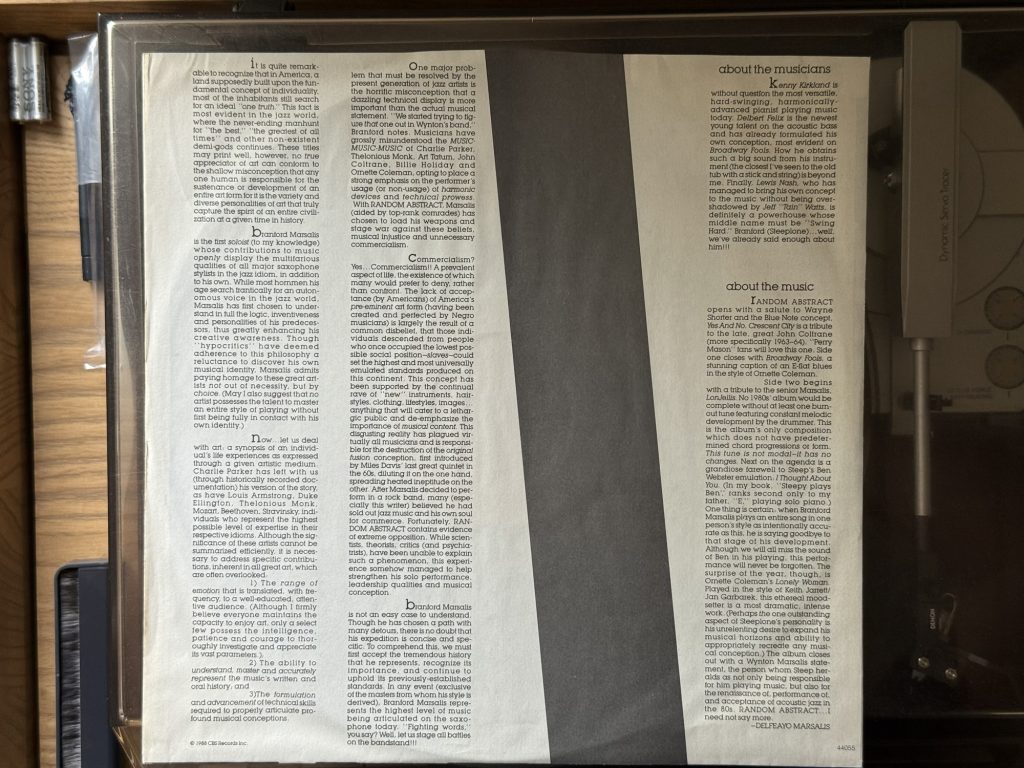
From the freely discordant romp of “LonJellis,” we flip into Johnny Mercer’s “I Thought About You.” Here again Branford wears his influences on his sleeve, transparently channeling the great Ben Webster. The band follows Branford through the tune for a complete verse and chorus, with Kenny taking the second verse and Felix taking a gutbucket solo on the third. Delfeayo characterizes this as a “farewell” to Branford’s explicit emulation of Webster on some of his earlier records, but while we get some of the tone of Webster throughout, there’s just as much of Branford’s own tone and harmonic imagination at work here. It’s a deep breath, a joyfully straight take on the classic tune and a welcome respite from the intensity of the rest of side 2.
Which takes us into “Lonely Woman.” While a faithful reflection of the great Ornette Coleman composition, there’s another voice in Kirkland and Branford’s approach, the lyrical and emotional depth of the Keith Jarrett—Jan Garbarek partnership as heard in Jarrett’s 1970s European Quartet. Jarrett appears not to have recorded “Lonely Woman,” but Garbarek did on an orchestral album and his playing of the theme has the hallmarks of Branford’s interpretation here—a deep melodic intensity, a passionate leaning into the high corners of the melody, and a continued circle around the core of Coleman’s melody. The intensity that Garbarek summoned on a full-orchestra rendition is here brought forward just in Kirkland’s rolling chords and constantly moving accompaniment. The performance plays with jazz conventions in a similar way that Miles’s second great quintet did, eschewing head/solo/solo/head forms and continually circling back to the tune, the horn constantly staying focused on that deeply evocative melody as the rhythm section continues to evolve its improvisational concept underneath. There’s some Chopin in Kirkland’s moving notes, and yes, some Keith Jarrett as well. Which isn’t to say that Branford just plays the tune; particularly in the bridge and in the transition from chorus to verse, he takes some powerful improvisational moments that extend time and shift the meter. The overall effect is powerful and, at over fifteen minutes, somewhat overwhelming with the relentless return of the core melody. Branford solos for over ten minutes before yielding the floor to Kenny Kirkland, who again finds a legion of melodic and rhythmic approaches to the material in his short essay at the music. It’s also in this piece that we most hear the contributions of Lewis Nash, whose approach ranges from the most delicate filigree of cymbals to crashing thunder on the tom and the snare. When the band finally breathes and lets the intensity trickle away in the closing moments, it has the feeling of the cessation of a thunderstorm. Closing out the side, “Steep’s Theme” is a tag, a short bit in the spirit of the great Miles Davis theme, here truncated with a rueful laugh.
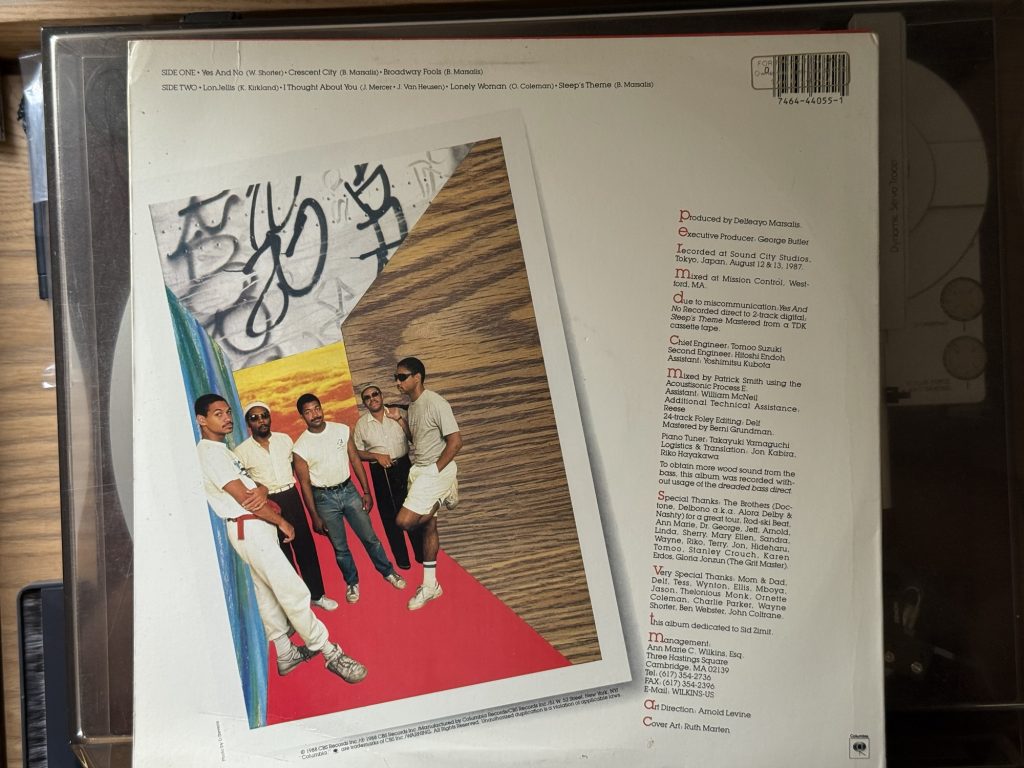
The variety of influences on display in this album shows that Branford was an intense student of a wide array of teachers, from the traditional to the avant-garde. At this stage in their development, you wouldn’t ever have heard Wynton essaying Ornette Coleman, Wayne Shorter, or Jan Garbarek, and certainly not all in the same set. But for all the wide array of sounds, the album has the feeling of an anthology more than a complete, coherent statement. In his next few outings, Branford would refine this sound into something that was more unambiguously his own. We’ll hear that in a few weeks; next week we’ll get to listen to another young player who steps out from his place in a Marsalis brother’s band to reveal his own musical and compositional voice in his debut album.
You can listen to this week’s album here:
BONUS: The CD version of the album also included two bonus tracks, Jerome Kern and Otto Harbach’s “Yesterdays” and a version of Monk’s “Crepuscule with Nellie,” which for me was a gateway to all things Thelonious. “Crepuscule” is composed, not improvised, so the performance on record is faithful to the version that debuted on Monk’s Music, except that Branford swings the melody ever so gently. It’s a great tune in any rendition, including this one from the 1987 Newport Jazz Festival:

